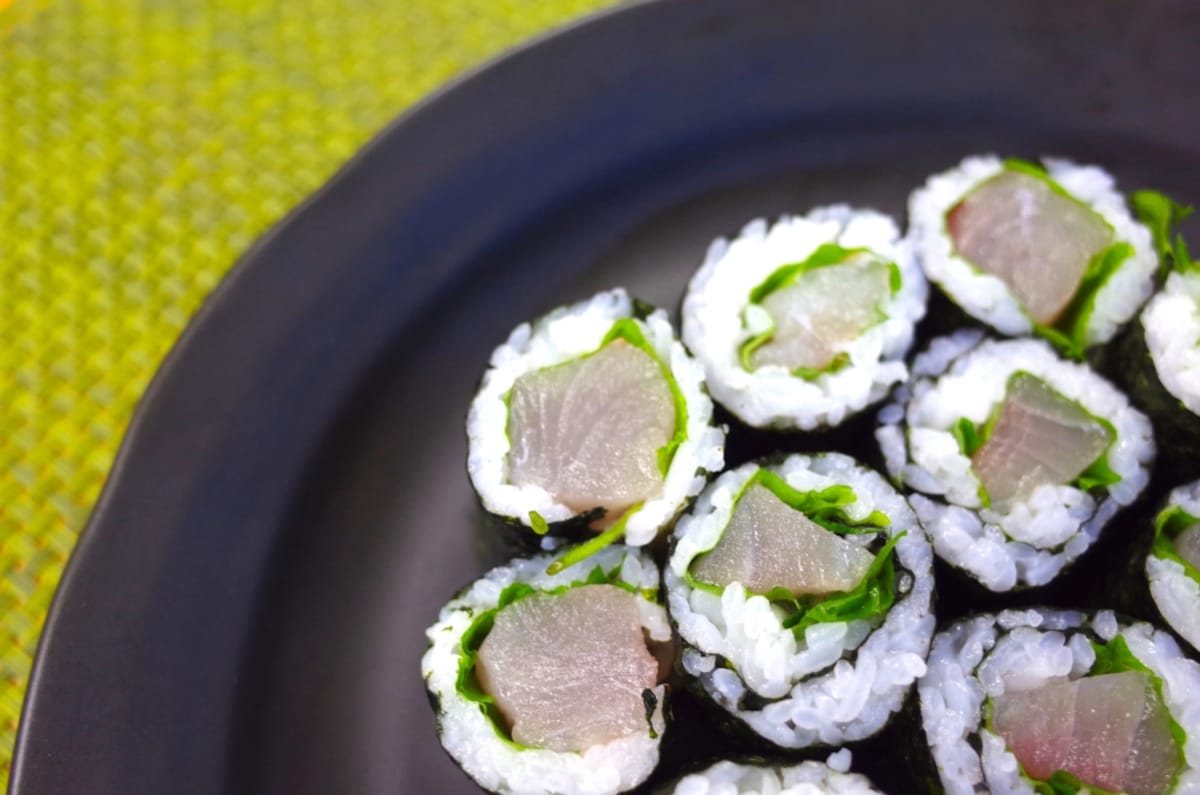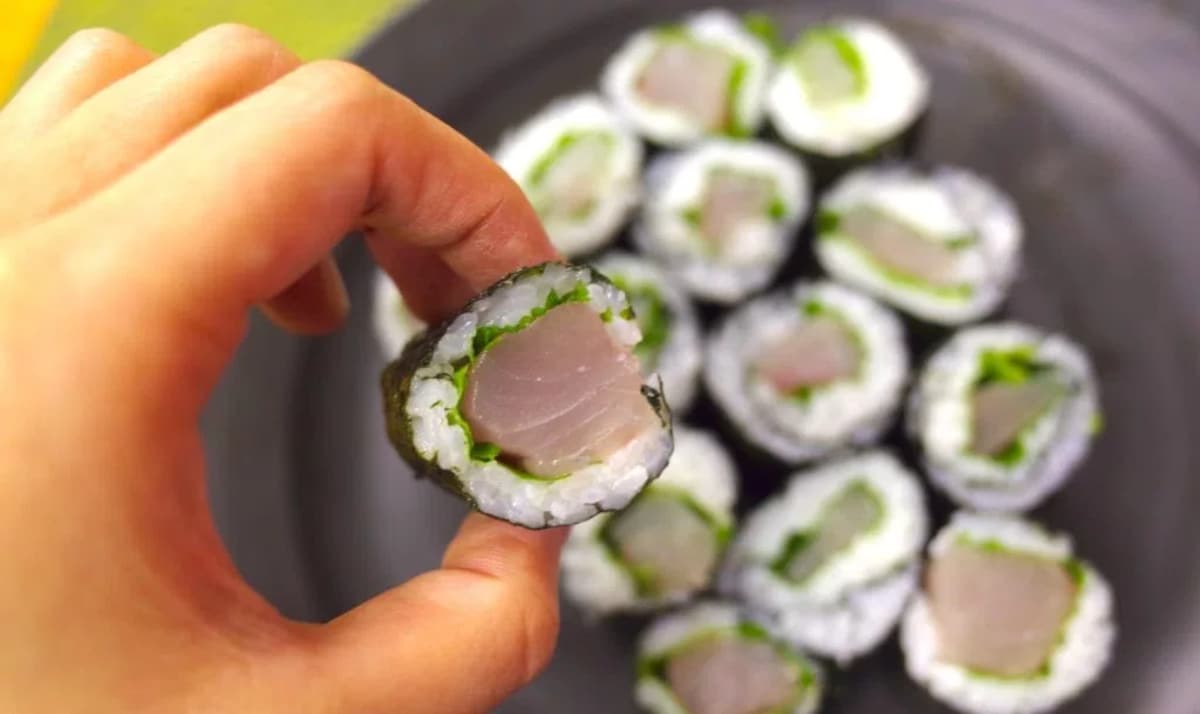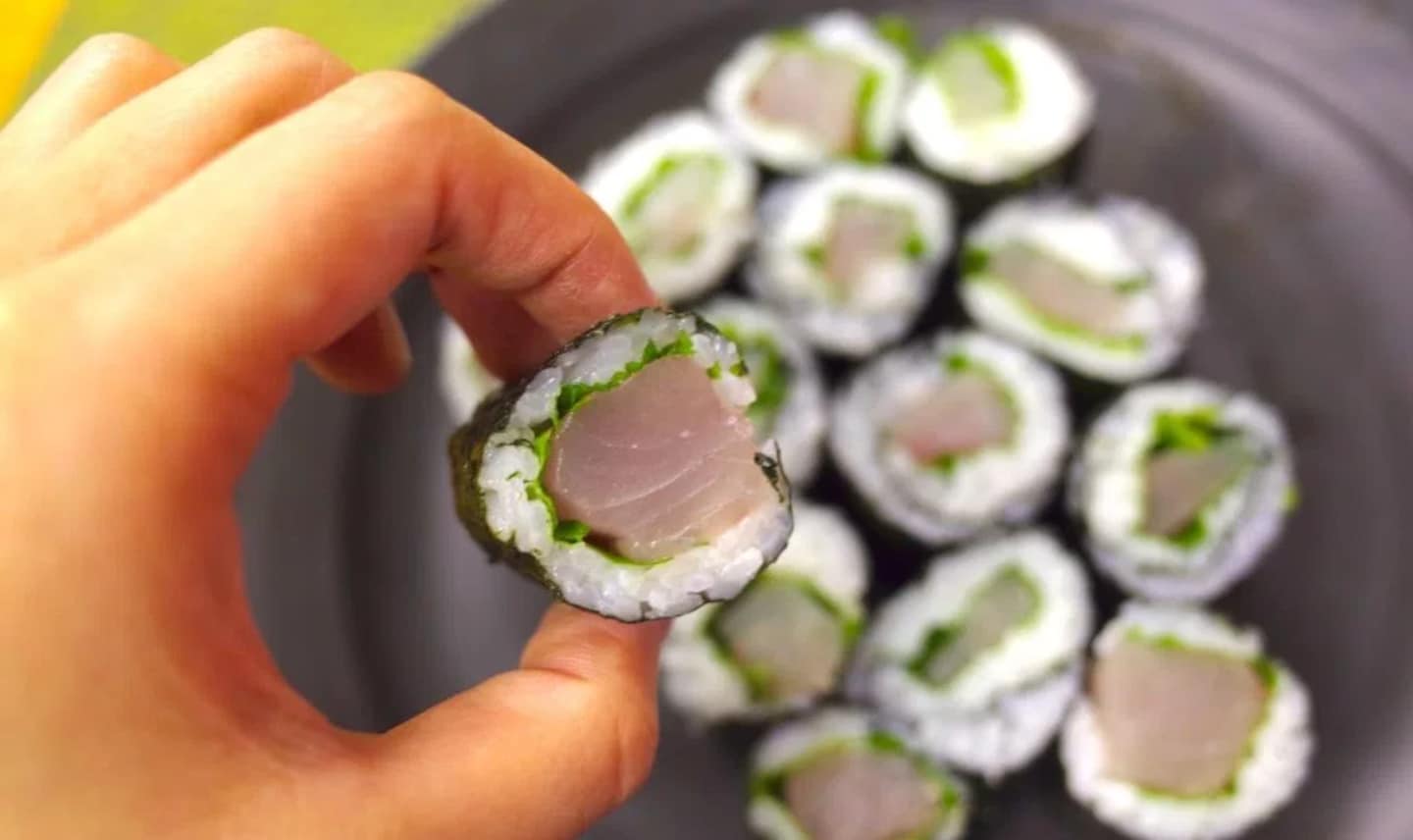Why Is This Sushi Roll White Instead of Red?
Japan doesn’t really go for the crazy, multi-ingredient sushi rolls served at overseas sushi restaurants. But one roll that you’ll find at any sushi place in Japan is tekkamaki.
By SoraNews24
https://pixabay.com/en/sushi-set-nigiri-maki-fish-raw-716450/
Tekkamaki (pictured on the left) are thin rolls of rice and maguro (Pacific bluefin tuna) wrapped in seaweed. That last part makes sense, since maki means “roll,” but tekka means “fired iron.” The reason for tekkamaki’s name is that maguro is bright red, and the color is evocative of an iron bar being shaped by a metalworker.
But here’s where things get weird. If you go to Nagasaki Prefecture and order tekkamaki, even though the name’s the same, there’s a good chance you’ll get something that looks, and even tastes, different.

https://en.rocketnews24.com/2017/11/02/theres-only-one-place-in-japan-where-this-kind-of-sushi-isnt-red-but-why/
As you can see, tekkamaki prepared in the Nagasaki way doesn’t have that fiery crimson color. Instead, the fish has a whitish shade, because that’s not maguro, but hamachi, or yellowtail tuna, instead.
Nagasaki is the only place in Japan that makes its tekkamaki like this. Not only that, thin hamachi sushi rolls, by any name, aren’t commonly on sushi restaurant menus anywhere else in Japan.
So why is Nagasaki the outlier? To find out, we contacted the Nagasaki Prefectural Sushi Trade Association, and they told us that suppliers in Nagasaki have an abundance of farmed hamachi and hiramasa (yellow amberjack) that are raised within the prefecture. As such, local restaurants always have a lot of those two types of fish on hand.

https://en.rocketnews24.com/2017/11/02/theres-only-one-place-in-japan-where-this-kind-of-sushi-isnt-red-but-why/
Since the highest-quality sushi is generally used for nigiri sushi (in which slices of fish are placed atop blocks of rice), when restaurants in Nagasaki have leftover hamachi or hiramasa in their refrigerators, they use it to make sushi rolls the next day, and they have enough that it replaces the maguro in their tekkamaki.
However, this is slowly starting to change. As Nagasaki diners see the rest of the country enjoying maguro tekkamaki, many have developed a taste for the orthodox version of the dish, and chain restaurants that open new branches in Nagasaki stick to the more commonly used maguro recipe. Still, the trade association told us that most local restaurants will give you the hamachi or hiramasa version if you ask for “shirotekka” (“white tekka”). And if you’re hoping to try it for yourself without making a trip all the way to Nagasaki, the representative we spoke to said you might be able to ask sushi chefs in other prefectures to make a shirotekka for you, provided you’re not in a revolving sushi restaurant that’s too busy to accommodate you, or a super high-end restaurant where the chef is too proud to field such requests.
Related Stories:
Carb-free sushi? Japanese sushi restaurant ditches the rice in its new menu items
Clever home sushi-making set puts a whole new spin on revolving sushi
Creatively designed sushi roll towels give daily life a little extra flavor




